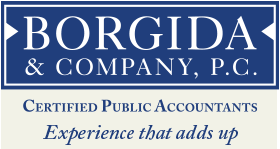“Nothing can be said to be certain, except death and taxes” – Benjamin Franklin
Sorry, we can’t help with the death part. But here are 4 Easy Ways to Save Income Taxes:
1. Maximize your 401(k) plan contributions
Many employers offer their employees a 401(k) plan. For many employees, this will be the cornerstone of their retirement plan. Employees need to take advantage of this fringe benefit. In 2019 employees can contribute up to $19,000 per year. Employees age 50 and older can fund an additional $6,000 with a ‘Catch up’ contribution for a total of $25,000.
Many employers will make some sort of a match. According to the Bureau of Labor Statistics, the average 401(k) plan match is 3.5%. Employees need to contribute at least enough to get the employer match.
2. Fund Your Individual Retirement Account (IRA)
Taxpayers under the age of 70 ½ with earned income can contribute up to $6,000 per year to their IRA. Taxpayers age 50 or older can contribute an additional $1,000 per year with a “Catch up’ contribution. Earned income can be from wages as an employee or self -employed income from a sole proprietorship or a partnership.
There are however income limitations with regards to who can contribute to a deductible IRA. For taxpayers that are active participants in a qualified retirement plan like the 401(k) plan mentioned above, higher income earners can’t contribute to a deductible IRA. In 2019 for a married couple filing a joint return, they can contribute to a tax deductible IRA if their adjusted gross income (AGI) is under $189,000. They can’t when their AGI exceeds $199,000. A partial deduction is allowed for incomes between these two incomes. For single filers, the AGI levels are $120,000 to $135,000.
There is legislation pending in Congress called the Setting Every Community up for Retirement Enhancement Act (SECURE Act). This legislation would remove the age restriction of not being able to contribute to an IRA after age 70 ½. This would make taxpayers eligible to contribute to an IRA the same as contributing to a Roth IRA; there would be no age limit. The Senate Bill has a similar provision. The President has indicated he would sign this legislation.
3. Taxpayers Over Age 70 ½ Make a Qualified Charitable Distribution From Your IRA
Taxpayers over age 70 ½ can make a Qualified Charitable Distribution (QCD) from their IRA. The Tax Cuts and Jobs Act (TCJA) essentially doubled the Standard Deduction. In 2019 the Standard Deduction for a married couple filing a joint return is $24,400.
Another change made by TCJA is that the state and local income tax (SALT) is limited to $10,000. This, along with the increase in the Standard Deduction will cause many taxpayers to no longer itemize their deductions.
For taxpayers over age 70 ½ that want to donate to charity, the QCD from their IRA is clearly the way to go. Taxpayers can donate up to $100,000 per year directly from their IRA to an eligible charity. An eligible charity is one recognized by the IRS as a 501(c)(3) entity or a religious organization. The donation is not included in the taxpayer’s income and is not allowed as a tax deduction. More importantly, the QCD counts against the taxpayers Required Minimum Distribution (RMD).
4. Connecticut Taxpayers Fund a CHET College Savings 529 Plan
Connecticut Taxpayers can fund up to $10,000 per year into the State 529 College Savings Plan with a Connecticut Higher Education Trust (“CHET”). Taxpayers can fund five years up front, any excess over the $10,000 gets carried over for the next five years. This $10,000 is the maximum deduction for a married couple filing a joint income tax return. Single taxpayers are limited to $5,000 per year. The deduction is only allowed on your Connecticut Income Tax Return. It is not allowed as a deduction on your Federal Income Tax Return. The CHET contribution is not limited to parents only. Grandparents, aunts, uncles, etcetera can all contribute to a CHET.
Qualified Educational Expenses distributed from a College Savings 529 Plan are income tax free. This includes up to $10,000 of annual distributions for Kindergarten through 12th grade for educational expenses at public, private or religious schools.
ACTION ITEM
Take advantage of these Four Easy Ways to Save Income Taxes. Check out other articles for Ways to Use the Tax Code to Retire in Style. If you have any questions, please give our office a call. We would be happy to help you.



